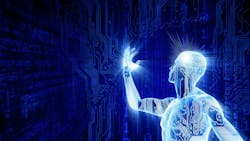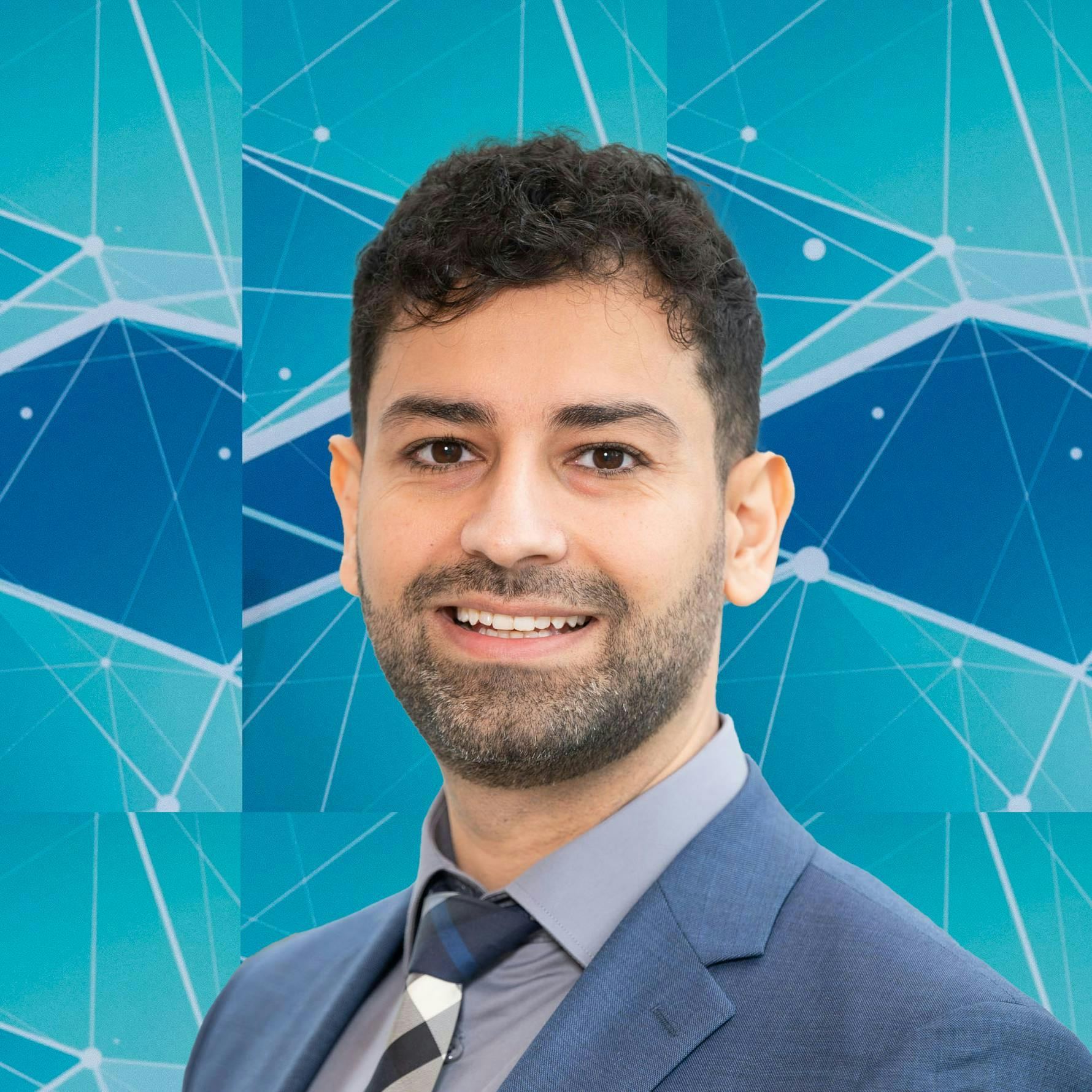AI/ML and digital twins are part of merging technologies shaping the future of automated factory equipment
Andritz is a system integrator and equipment manufacturer, based in Austria. The public company builds entire plants in many different industries, including pulp and paper, hydro, metals forming and environment and energy. Andritz’s focus on supporting autonomous operations through the use of artificial intelligence and digital twins heavily influences the machines, systems and facilities that it designs.
“We are growing very fast,” says Dr. Sohail Nazari, global vice president and head of automation and digitalization for Andritz feed and biofuel, part of the company’s environment and energy group. He credits this in part to Andritz’s commitment as an environment for change. “We have put a lot of focus on sustainability and also the environmental challenges that our customers are facing.”
Out of Andritz’s approximately 30,000 employees around the world, about 2,000 are automation and digitalization specialists in its different business units. In addition to being a system integrator, Andritz is an equipment manufacturer and software provider. Andritz builds many machines for different industries, such as recovery boilers or digesters for pulp and paper and palletizers for feed and biofuel. Andritz also partners with many companies to provide equipment and machines that it does not build itself, such as conveyors and silos.
Digitalization in the feed and biofuel industries
Nazari sees great opportunity for digitalization and advanced automation in the feed and biofuel industries. “There’s a huge opportunity here,” he says. In general, the industry’s adoption of automation and digitalization strategy is behind that of some of Andritz’s other core industries such as mining, pulp and paper and oil and gas.
The process in feed and biofuel is simpler and more linear, Nazari says. “That’s why, maybe in the past, we were able to be efficient enough with base-level automation,” he says. “Now, I can see, as every other industry, we are going through an awakening of using advanced technologies in our process industries. I think feed is also going through that. I see that very good companies are looking at smart manufacturing. They’re looking at how they can improve and optimize their processes using new technologies. That’s an exciting time for the feed industry, but the infrastructure definitely is behind other industries. I would say that’s an opportunity.”
Andritz focuses on many different kinds of equipment to build entire plants for aqua, pet food, animal feed or biofuels. Andritz machines include milling equipment like hammer mills and roller mills. The Andritz Roto-Shaker uses gyratory-reciprocating screening action as a dry screener for corn gluten feed to remove unwanted particles in order to ultimately reduce the load on the hammer mill. Andritz provides the complete palletizing packaging, including the conditioner, mixing and palletizing equipment. The company also builds cooling, drying and extrusion machines, and Andritz works on-site to integrate machines and complete plant operations.
In March, Andritz partnered with Netzsch-Feinmahltechnik, a machine builder of comminution, ultrafine grinding and classification machines, for the alternative protein market. The combination with Andritz’s expertise in conditioning, extraction, dewatering, drying, extrusion and pelleting will help the market move from lab to industrial scale.
Fully autonomous operation
Andritz wants to be a turnkey automation provider, including machines, integration, engineering and digitalization products for a fully autonomous operation. “We want to be a one-stop shop for our customers,” Nazari says.
Andritz has also developed advanced digital technologies like Metris, created originally for the pulp and paper industry and provides the maintenance package for operators. Out of necessity Andritz was motivated to increase the reliability of its equipment and increase machine efficiency and be more proactive and predictive in maintenance, Nazari says. Andritz built different applications into a single software platform for pulp and paper, which it has expanded to its other industries. “We can use what is already developed and proven and battle-tested in the other industries, but what we do in feed is that we put Andritz’s feed and biofuel knowledge and know-how into the software, so that it’s ready to use out of the box and be valuable to the feed industry,” Nazari says.
Andritz wants to support fully autonomous operations in feed and biofuel by 2027. To do that, in part, the company announced in April that it has partnered with Microsoft, combining Andritz’s Metris digital platform and Microsoft’s Cloud for Manufacturing. Andritz integrated an artificial-intelligence (AI) copilot based on Microsoft’s Azure OpenAI service. The Metris copilot simplifies anomaly detection and streamlines communication between operators and machines. A chat interface provides real-time machine insights and facilitates informed decision-making.
Andritz is also embracing digital solutions for its own internal journey, with Copilot for Microsoft 365 to automate repetitive tasks and provide insights to streamline internal processes and help employees focus on more strategic tasks.
In 2018, Andritz also won the Microsoft Intelligent Manufacturing Award in the Disrupt! category, for products that have the potential to fundamentally transform value chains. The award recognized Andritz for its work enabling the autonomous operation of pulp mills. Andritz has defined a five-level journey toward autonomy, which at the time had been implemented at 39 pulp mills at varying levels. One of the mills achieved 97% autonomy, compared to the industry benchmark at 60-65%, according to Andritz.
Nazari is now working to bring those levels of automation to Andritz’s feed and biofuel customers. The move to autonomous operations is a journey, Nazari says. “We have different plants in different stages and using different solutions to answer and fill the gaps for different problems,” he adds. Andritz’s full line of technology and machines for the fully autonomous feed and biofuel facility will be ready by 2027 and available for its individual customers wherever they are on the automation journey.
The future of AI and manufacturing
Nazari was careful in talking about AI applications and advances in digital twins. “Not every technology is AI. We have to be very careful. Not every technology is a digital twin,” he says.
Many want to slap “AI” on a product that’s been in existence for 15 years, he explains. “Everything is artificial intelligence, if you think about it, because basically data analytics, some now call it machine learning,” Nazari says. All the different analysis that we do from mean and average data, we now call machine learning, he adds.
That said, Andritz has explored these technologies where appropriate, largely in greenfield projects. “That is something we’re providing into the feed industry now. We’ve been doing that in pulp and paper, in mineral processing and other places,” Nazari says.
He sees generative AI as a huge benefit to machine coding. “On the other side, the part that I think is becoming more important is how can you bring the process know-how and maintenance know-how in generative AI to guide our operators to answer their questions and guide them to find a solution,” Nazari says. “If they have any questions they can ask, but the answer comes from the know-how of the industry that we have infused into our digital software, that’s something I see that is very much bringing a lot of value as part of the journey of that autonomous operation.”
Digital twins for hot commissioning
Andritz also has proprietary software for digital twins to build an entire plant model in high fidelity, which, Nazari says, is a measure of how much the simulation can represent the reality of the plan. It’s a dynamic simulation of each piece of equipment, machine and process. “We build these equipment models one by one, based on physics and the fully dynamic chemistry, which means that second by second they behave as they would behave in the outside world,” Nazari says.
The simulations also include models of all the materials and their characteristics and physical and chemical reactions. “We’ve been working on these simulation models for the past 20 years,” Nazari says. That includes all Andritz historical machine and equipment data and process know-how built into the system upfront. “We bring the plant to life,” Nazari says. “This is before the plant is even built.”
In the model, you can calculate the power consumption, efficiency, throughput in different scenarios. This can be used in piping and instrumentation diagrams(P&ID) validation, Nazari says.
“We validate the design because often what happens when engineering companies design a plant is they design it at a steady-state level, and then they put in 20 or 10% margin to make sure it does answer all the needs,” Nazari says. “But the reality is that when you dynamically model the plant, you can see the problems arise. We will see and find out if there are any problems. We flush out all those problems and make sure that, in a year or two years when you’re operating, you don’t find a surprise.”
Andritz builds a complete virtual commissioning setup and the comprehensive model connected directly to the control system. The virtual commissioning, or “hot commissioning,” takes place three or four months before actual commissioning.
The software also has an instructor function to train operators on the system, similar to a flight simulator for instructing pilots. “When they go to startup, the operators are completely trained, the plant is virtually commissioned, and the design is completely checked. That helps us to decrease the ramp-up time significantly,” Nazari says.
Connecting the physical, first-principles model into real time is something Andritz has only been doing for the past few years. The other emerging technology it’s experimenting with is reinforcement learning algorithms to train AI agents on how to operate the plant, based on the operator training simulator that’s built for operators. “If you’re able to train the operators how to operate the plant, can we train reinforcement learning agents how to operate the plant?” Nazari asks.
Advances in computing power
Nazari says there is not one technology that is going to solve all the problems. It’s a merging of multiple technologies together that will be the solution. “I know it’s cool to make everything AI, but we have often seen a predictive algorithm model or predictive controller using a digital twin together to predict the behavior and control the equipment often works much better than bringing in a very sophisticated reinforcement learning algorithm to solve a problem that can be solved with the lower-level technology,” Nazari says. “There is no one solution that fits all.”
Modern machine learning algorithms have been in development for the past 30 years. “Ten to 20 years ago, PLC programming was AI,” Nazari says. “It’s just we couldn’t use them because we didn’t have the computation power, so taking advantage of this computation power is the merging that is happening now. It’s not the algorithms that are new.”
About the Author
Anna Townshend
Managing Editor
Anna Townshend has been a writer and journalist for 20 years. Previously, she was the editor of Marina Dock Age and International Dredging Review, until she joined Endeavor Business Media in June 2020. She is the managing editor of Control Design and Plant Services.

Leaders relevant to this article:


